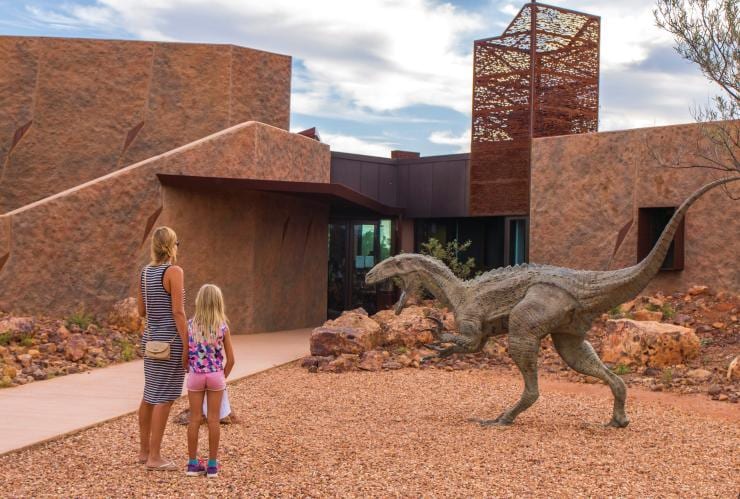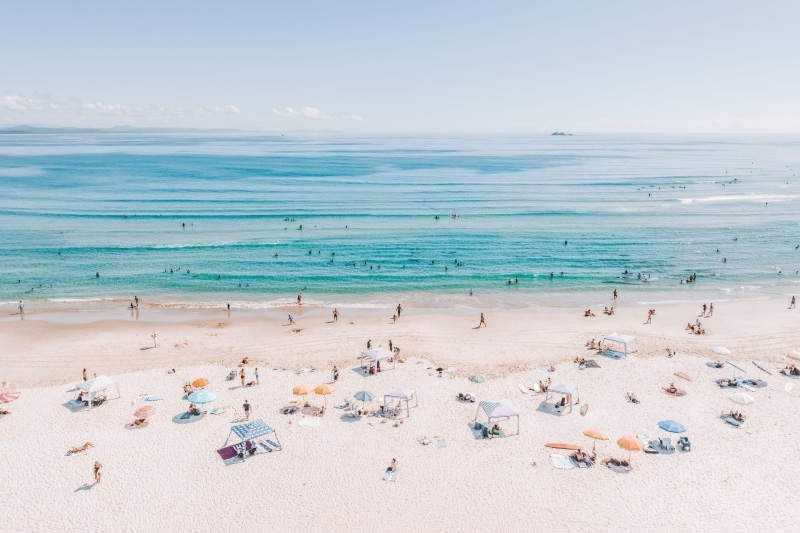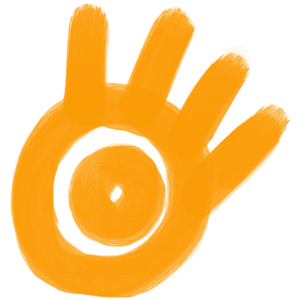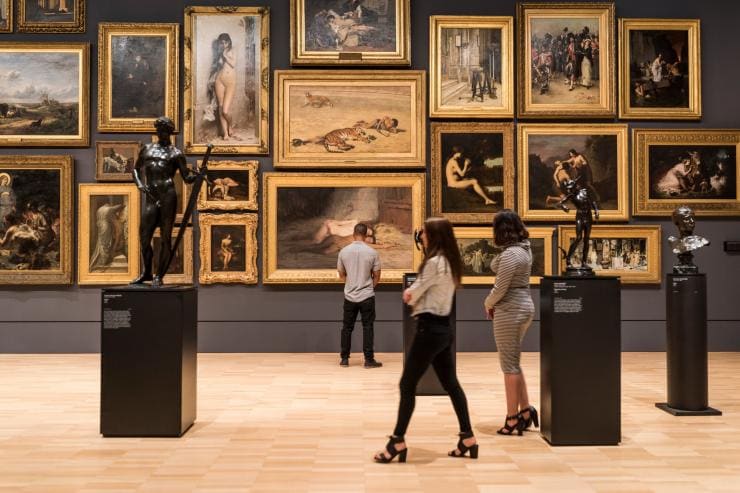
Port Arthur Historic Site, Port Arthur, Tasmania © Alastair Bett
History of Australia for the Curious Traveller
From the first inhabitants to the modern day, discover the people, places and events that have shaped Australia.
By Andrea Black and Paul Ewart
Millions of years in the making, Australia has an extraordinary history. The people, places and events that have shaped this country are celebrated in the form of unforgettable festivals, museums, walks, guided tours and more. History lovers will be richly rewarded with one-of-a-kind experiences that delve into the backstory of the island nation.
Prehistoric

Australian Age of Dinosaurs, Winton, Outback Queensland © Tourism & Events Queensland
Dinosaurs lived from about 250 to 65 million years ago and there’s plenty of fossil evidence that shows a diverse range roamed Australia’s ancient lands.
You can follow in the footsteps of these prehistoric giants by joining the five-day Australian Dinosaur Trail in Queensland, which includes a visit to the site of the only known dinosaur stampede on the planet. These fossilised dinosaur footprints actually inspired the stampede scene in the blockbuster film, Jurassic Park. Not far from here you will also find the Australian Age of Dinosaurs Museum, home of the world’s largest collection of Australian dinosaur fossils.
On the west coast, wander the Dinosaur Coast to see fossilised tracks from around 130 million years ago. In Sydney, be sure to view the permanent exhibition bringing the Mesozoic era to life at the Australian Museum.
Aboriginal Australia

Aboriginal woman, Tiwi Islands, Northern Territory © Tourism Australia
Aboriginal and Torres Strait Islander peoples have lived on the continent for more than 60,000 years. Pre-European colonisation, Aboriginal Australians were cultivating and irrigating farming areas, establishing fisheries and building permanent homes. Their understanding of the environment and its natural resources supported thriving villages across the continent, contrary to the popular misconception that they were all hunter-gatherer clans.
Go off-the-beaten-track for an immersive journey with an First Nations guide and you’ll uncover even more truths about the many cultures here. Each is unique in its language, belief system and powerful connection to place, ensuring countless opportunities for you to learn and connect.
Explore ancient rock art sites and gain profound insights into Dreamtime stories; take part in First Nations-led artist workshops; experience bush tucker on a culinary-inspired tour; and go on an interpretive adventure through idyllic local waterways, rolling sand dunes or lush mangroves — there’s a wealth of Aboriginal-led tourism offerings to experience.
Cook and Colonisation

HMB Endeavour replica, Australian National Maritime Museum, Sydney, New South Wales © Australian National Maritime Museum
Lieutenant James Cook, captain of HMB Endeavour, claimed the eastern portion of the Australian continent for the British Crown in 1770 and, eighteen years later, the First Fleet arrived to establish a penal colony in New South Wales.
To find out more about European settlers and their journey, tour a replica of James Cook’s flagship at the Australian National Maritime Museum in Sydney. You can check out Cook’s first landing place at Botany Bay. To get a feel for what life was like for the first Europeans in Australia, take a walking tour around The Rocks, the site of the first European settlement in Sydney. You’ll be intrigued by the incredible stories of murders, muggings and mysteries.
Convicts

Port Arthur Historic Site, Tasmania © Port Arthur Historic Site
The British Government sent ships carrying convicted criminals or ‘convicts’, to Australia not only to rid England and Ireland of the criminals, but also to use them as labourers in the newly formed colonies.
From January 1788, when the First Fleet of convicts arrived at Botany Bay, to the end of convict transportation 80 years later, more than 160,000 convicted men, women and children as young as 13 were transported to the country, usually in extremely harsh conditions.
There are 11 Australian Convict Sites on the World Heritage list including former gaols that not only housed convicts, but were also built by them. Take a tour of Fremantle Prison near Perth, which was built by convict labour from limestone quarried on site. Those brave enough can take the Isle of the Dead Cemetery Tour at Port Arthur in Tasmania to learn gruesome tales of life here, both for those serving sentences and those keeping guard. And in Sydney, there’s a fascinating walk of The Rocks to uncover the scallywag stories of convicts. Former penal islands to discover include Norfolk Island, Cockatoo Island in Sydney Harbour and Maria Island off Tasmania’s east coast.
Bushrangers

Ned Kelly’s armour, Beechworth, Victoria © Visit Victoria
In the early years of the country’s colonisation, escaped convicts were known as bushrangers. This was a local take on the classic bandit or highwayman, and today these wild escapees hold a special place in Australian folklore.
The most notorious bushranger of all is Ned Kelly, who managed to evade police for years. You can trace the steps of the ironclad outlaw and the Kelly Gang by taking a guided walking tour in the Victorian town of Beechworth. In the former gold mining town of Canowindra in New South Wales, learn about the local rogues by taking a guided journey to relive the heady days of the 1860s. In Western Australia, the most infamous bushranger was Moondyne Joe, who escaped from Fremantle Prison multiple times. Every year in the town of Toodyay there’s a festival dedicated to the scoundrel.
Gold Rush

Sovereign Hill, Ballarat, Victoria © Visit Victoria
While the American Wild West tends to be top of mind when you think of the 19th century gold rush, Australia had its very own period of prospecting. Gold was first discovered in the mid 1800s, and soon remote towns across the country were flourishing as people from all walks of life were lured by the idea of striking it rich. Remnants of the bygone era can still be seen in many of these towns today.
One of the best places to step back in time and experience what life was like for prospectors is at Sovereign Hill, an open-air museum 1.5 hours west of Melbourne. Meet characters in full costume, explore their replica homes and even pan for gold.
Australia at War

Anzac Day Dawn Service, Australian War Memorial, Canberra, Australian Capital Territory © VisitCanberra
Read next
Australia's historical and cultural experiences
Brave Australian soldiers battled far from home during World War I. An estimated 60,000 ANZACS (an acronym for Australian and New Zealand Army Corps) died and tens of thousands were wounded in action.
During World War II, Australian forces made a significant contribution to the Allied victory. The battle hit home soil in 1942 when Darwin was bombed by 260 enemy aircraft.
Every year on April 25, ANZAC Day is commemorated across the country with dawn services and marches. Afterwards, many Aussies retreat to pubs and Returned Service League (RSL) clubs to play Two-Up — an unregulated form of gambling allowed only on this day — where a designated "spinner" throws two coins and players hedge their bets on whether the coins will land ‘heads’ or ‘tails’ up.
Multicultural Australia

Chinatown, Melbourne, Victoria © Tourism Australia
Australia is home to the world’s oldest continuous culture, as well as Australians who identify with more than 270 ancestries. Prior to the gold rush, most immigrants were of British or Irish descent. The discovery of gold in the 1850s saw an influx of people coming from Continental Europe, China, and to a lesser degree, The United States, New Zealand and the South Pacific. Today you can wander any Australian city and see an A to Z of ethnicities, from Greek and Lebanese, to Vietnamese and Japanese.
One of the many benefits of a rich diversity is the chance to sample different cultures. From Little Italy in Sydney and Chinatown in Melbourne, to Australia’s oldest surviving German settlement in Hahndorf, South Australia, you can explore how immigrants have maintained their culture while embracing life here. Learn more at the Immigration Museum in Adelaide.



































































































































